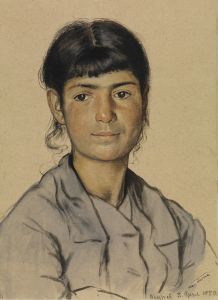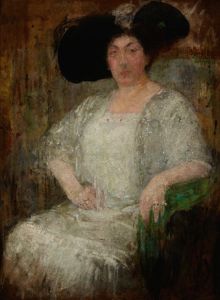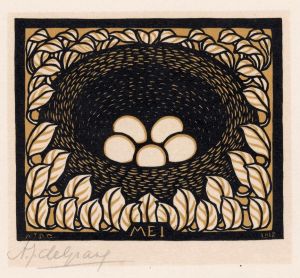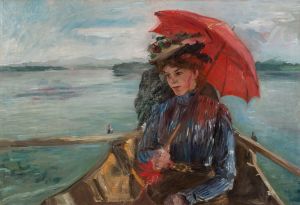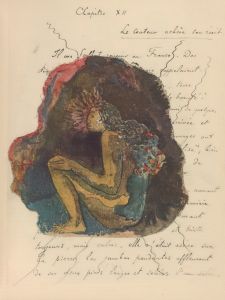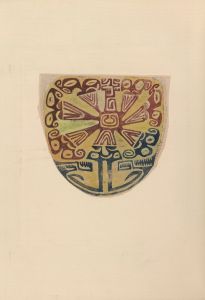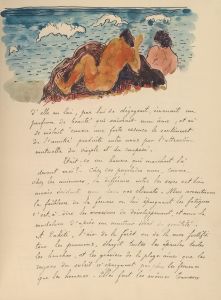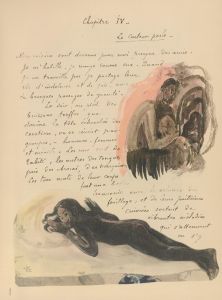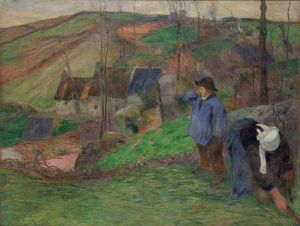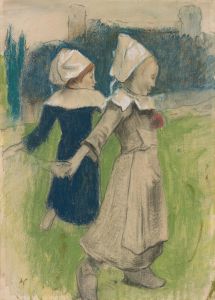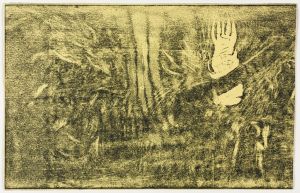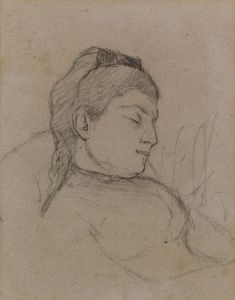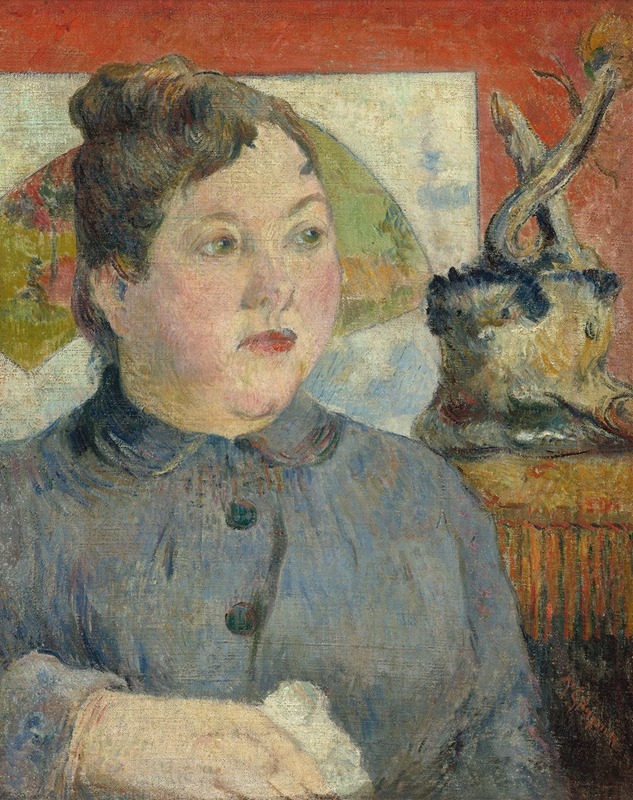
Madame Alexandre Kohler
A hand-painted replica of Paul Gauguin’s masterpiece Madame Alexandre Kohler, meticulously crafted by professional artists to capture the true essence of the original. Each piece is created with museum-quality canvas and rare mineral pigments, carefully painted by experienced artists with delicate brushstrokes and rich, layered colors to perfectly recreate the texture of the original artwork. Unlike machine-printed reproductions, this hand-painted version brings the painting to life, infused with the artist’s emotions and skill in every stroke. Whether for personal collection or home decoration, it instantly elevates the artistic atmosphere of any space.
Paul Gauguin, a leading figure in the Post-Impressionist movement, is renowned for his bold use of color and synthetist style that set him apart from his contemporaries. One of his lesser-known works is "Madame Alexandre Kohler," a painting that exemplifies his unique approach to portraiture and his evolving artistic style during the late 19th century.
"Madame Alexandre Kohler" was painted in 1887, a period when Gauguin was exploring new artistic territories and experimenting with different techniques. This painting was created during a significant phase in Gauguin's life when he was living in Martinique, an experience that profoundly influenced his artistic development. The tropical environment and the vibrant culture of the Caribbean island had a lasting impact on his use of color and composition.
The subject of the painting, Madame Alexandre Kohler, remains somewhat enigmatic, as there is limited information about her identity or her relationship with Gauguin. However, it is known that Gauguin often painted portraits of individuals from his social circle, capturing their likenesses with a distinctive blend of realism and abstraction. In "Madame Alexandre Kohler," Gauguin employs a rich palette and bold brushstrokes to convey the personality and presence of the sitter.
The painting reflects Gauguin's departure from the Impressionist style that dominated the art scene in France during the late 19th century. Instead of focusing on the effects of light and atmosphere, Gauguin emphasized the emotional and symbolic content of his subjects. This approach is evident in "Madame Alexandre Kohler," where the use of color and form transcends mere representation, offering a deeper insight into the character of the sitter.
Gauguin's time in Martinique was marked by a fascination with the exotic and the primitive, themes that would later become central to his work in Tahiti. The influence of the Caribbean can be seen in the vibrant colors and the simplified forms of "Madame Alexandre Kohler," which hint at the artist's growing interest in non-Western art and culture. This painting serves as a precursor to Gauguin's later works, where he would fully embrace these themes and develop his signature style.
"Madame Alexandre Kohler" is a testament to Gauguin's innovative spirit and his willingness to break away from traditional artistic conventions. The painting not only captures the likeness of its subject but also reflects the artist's quest for a new visual language that could express his inner vision. Today, Gauguin is celebrated as a pioneer of modern art, and works like "Madame Alexandre Kohler" continue to be studied for their contribution to the evolution of portraiture and their role in the broader context of art history.
While "Madame Alexandre Kohler" may not be as widely recognized as some of Gauguin's other masterpieces, it remains an important piece in understanding the trajectory of his artistic journey. The painting is a valuable example of Gauguin's early experimentation with color and form, offering insight into the development of his distinctive style that would later influence generations of artists.





